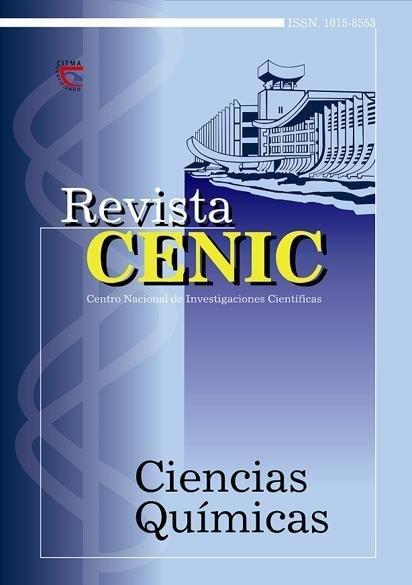Determinación de vanadio por espectrometría de absorción atómica en fuel oils
Abstract
Vanadium, one of the main pollutants in crude oil, causes major problems in the oil refining process as it poisons the catalyst used in craking. In this paper two alternative processing methods for samples of fuel oils with high and low content of vanadium from the Ñico López Refinery to determine the concentration of this element by means of atomic absorption spectrometry were compared. The test were carried out in the Atomic Absorption Labs of Centro de Investigaciones del Petróleo and the Ñico López Refinery so as to match both results. In the equipment were enhanced the followings work parameters: lamp current, band pass, height of burner and flows of acetylene and nitrous oxide. The optimization of parameters was achieved by means of univariante study. Two methods were used for the mineralization: 1) by using an organic solvent (Yet fuel) and 2) by using a mixed digestion process (with sulfuric acid) followed incineration in the oven with the following dissolution of ashes by using nitric acid (1:1). By comparing both statistic figures the authors concluded that both methods are equivalent. However, it is recommended the direct method as it does not involve the sample processing that leads to pollution or the losing of the analyte.

Downloads
Published
How to Cite
Issue
Section
License
Copyright (c) 2006 Copyright (c) 2006 Revista CENIC Ciencias Químicas

This work is licensed under a Creative Commons Attribution-NonCommercial-ShareAlike 4.0 International License.
Los autores que publican en esta revista están de acuerdo con los siguientes términos:
Los autores conservan los derechos de autor y garantizan a la revista el derecho de ser la primera publicación del trabajo al igual que licenciado bajo una Creative Commons Atribución-NoComercial-CompartirIgual 4.0 que permite a otros compartir el trabajo con un reconocimiento de la autoría del trabajo y la publicación inicial en esta revista.
Los autores pueden establecer por separado acuerdos adicionales para la distribución no exclusiva de la versión de la obra publicada en la revista (por ejemplo, situarlo en un repositorio institucional o publicarlo en un libro), con un reconocimiento de su publicación inicial en esta revista.
Se permite y se anima a los autores a difundir sus trabajos electrónicamente (por ejemplo, en repositorios institucionales o en su propio sitio web) antes y durante el proceso de envío, ya que puede dar lugar a intercambios productivos, así como a una citación más temprana y mayor de los trabajos publicados (Véase The Effect of Open Access) (en inglés).













